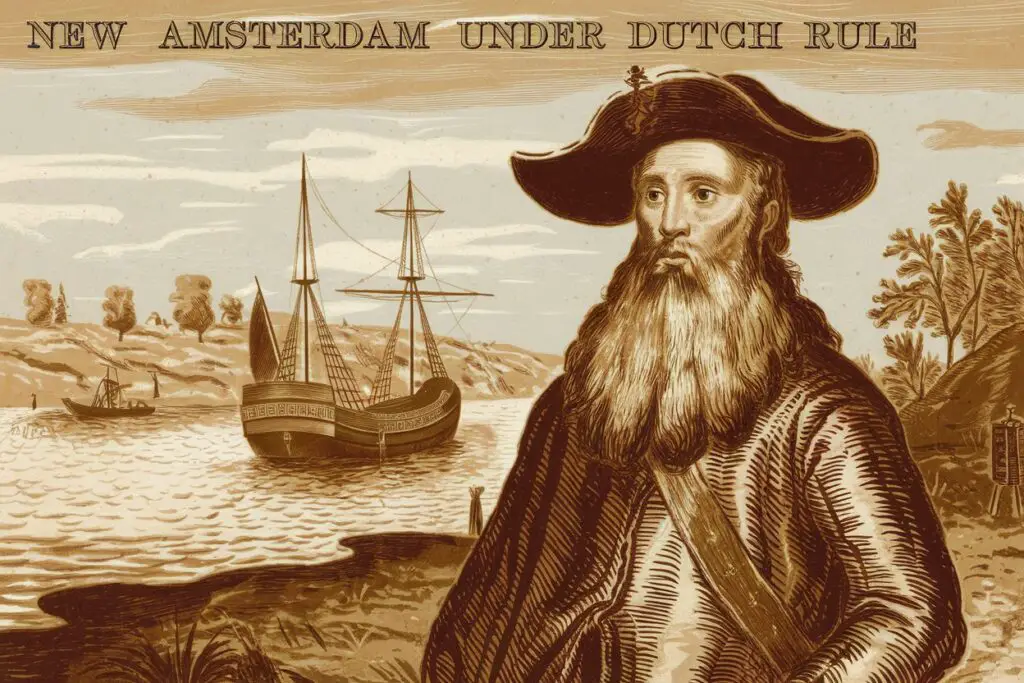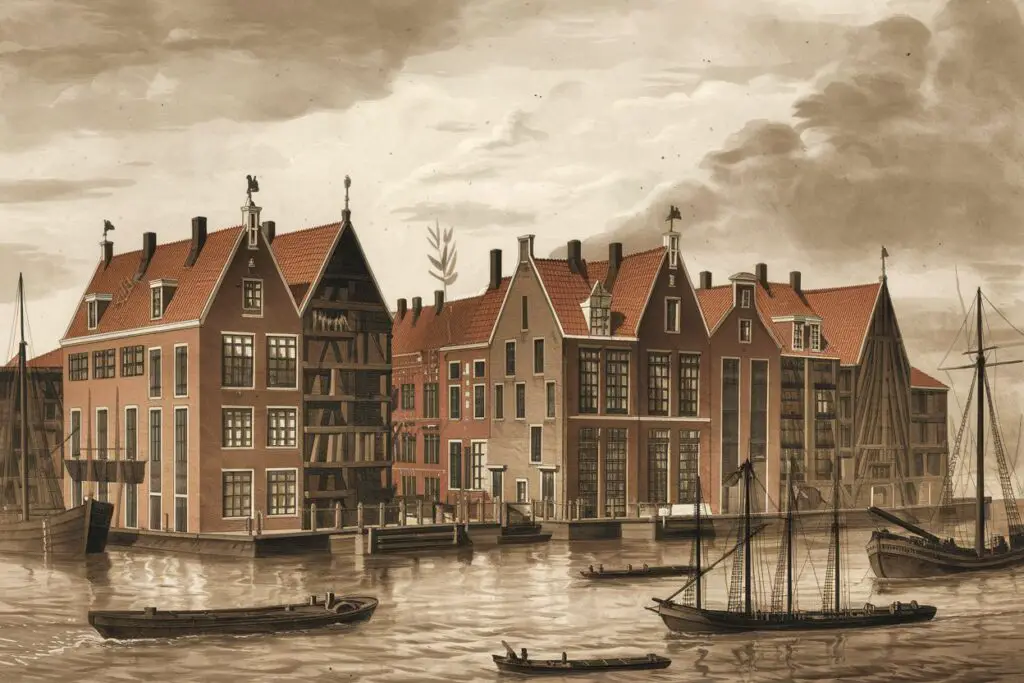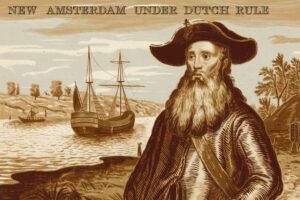The Original Name—New Amsterdam Under Dutch Rule
Before New York became a global metropolis, it was a modest Dutch settlement called New Amsterdam—an outpost that reflected more about 17th-century European ambition than American identity. Established formally in 1625 by the Dutch West India Company, New Amsterdam was strategically positioned at the southern tip of Manhattan Island, a location chosen for its deep harbor and proximity to key fur trade routes along the Hudson River. While the initial Dutch presence in the area dates to 1624, it was Peter Minuit’s purchase of Manhattan in 1626—allegedly for goods worth 60 guilders, often mythologized as $24—that cemented Dutch claims to the land.

The name “New Amsterdam” wasn’t chosen by accident. It echoed the bustling capital of the Netherlands, Amsterdam, and symbolized the Dutch ambition to replicate their urban commercial success in the New World. The colony was part of a larger Dutch territory known as New Netherland, which extended into present-day New Jersey, Connecticut, and parts of Delaware. Under Dutch rule, New Amsterdam was surprisingly cosmopolitan for its time. By the 1640s, it had become one of the most ethnically diverse settlements in North America, with residents speaking over 18 languages and practicing a range of religions—a reflection of Dutch tolerance and the economic lure of beaver pelts.
But it wasn’t all trade and tolerance. The settlement’s boundaries were defined by a wooden palisade along what is now Wall Street, built both to protect against potential attacks by the Lenape and to assert control over encroaching English interests. The Dutch administration was led by the stern and often unpopular Governor Peter Stuyvesant, whose tenure from 1647 to 1664 was marked by both urban development and rising tensions with the English. His inability to rally the population against an English naval squadron led to the peaceful surrender of New Amsterdam in 1664.
Still, the Dutch legacy didn’t vanish with the name. Neighborhoods like Harlem (originally “Haarlem”) and Brooklyn (from “Breukelen”) retain their Dutch roots, and even the city’s flag—featuring the Dutch tricolor and a windmill—pays homage to its colonial origins. So while the name “New York” may dominate today’s maps, the imprint of New Amsterdam remains etched into the city’s cultural and historical DNA.
Founded by the Dutch West India Company in 1624
The founding of New Amsterdam in 1624 wasn’t just a footnote in colonial history—it was a bold maneuver in the global chess game of 17th-century imperialism. Spearheaded by the Dutch West India Company, a powerful trading conglomerate chartered in 1621, the settlement was part of a broader Dutch strategy to outmaneuver Spanish and Portuguese dominance in the Atlantic world. This company, essentially a semi-private arm of the Dutch Republic, was granted a monopoly over trade and colonization in the Americas and West Africa, making it both a commercial enterprise and a geopolitical weapon.
In the spring of 1624, the company dispatched approximately 30 Walloon families—French-speaking Protestant refugees from what is now Belgium—to establish a permanent colony in the New World. Their initial landing took place on Governors Island, but they soon relocated to the southern tip of Manhattan, where they constructed Fort Amsterdam as both a trading post and a defensive stronghold. This fort would become the nucleus of what was then called New Amsterdam.
The Dutch West India Company’s primary aim wasn’t religious conversion or agricultural expansion—it was profit, plain and simple. Beaver pelts, highly prized in Europe for hat-making, were the colony’s economic lifeblood. By anchoring themselves at the mouth of the Hudson River, the Dutch gained prime access to inland trade routes, allowing them to tap into Native American fur networks. And though Peter Minuit’s famous 1626 purchase of Manhattan for 60 guilders (roughly $24 in colonial trinkets) would come later, the groundwork laid in 1624 marked the true beginning of what would evolve into one of the most iconic cities in the world.
Even today, the legacy of this corporate experiment in colonization can be seen in New York’s grid-like street plan, its multicultural ethos, and its enduring role as a global commercial hub. The city’s DNA, in many ways, still carries the imprint of its Dutch roots—strategic, opportunistic, and relentlessly entrepreneurial.
Named After the City of Amsterdam in the Netherlands
The name “New Amsterdam” wasn’t just a creative flourish—it was a deliberate homage to the Dutch capital, Amsterdam, one of the most powerful and prosperous cities in 17th-century Europe. When the Dutch West India Company established a trading post at the southern tip of Manhattan in 1625, their ambitions weren’t modest. They envisioned a bustling colonial outpost that mirrored the commercial prowess of the homeland, and what better way to signal that than by naming it after the beating heart of Dutch trade and governance? According to historical records from the Dutch colonization period, the name “Nieuw Amsterdam” reflected both national pride and strategic branding for the new settlement.
Amsterdam at the time was in the midst of the Dutch Golden Age—a period marked by global maritime trade, financial innovation, and cultural flourishing. The Dutch were world leaders in navigation and mercantilism, and Amsterdam was their crown jewel. Naming the colony New Amsterdam wasn’t just symbolic; it was aspirational. It aligned the fledgling North American outpost with the economic and civic ideals of its namesake, reinforcing the Dutch Republic’s goals of expanding its influence through commerce and colonization.
Interestingly, the settlement began not as a city but as Fort Amsterdam—a military and trading fortification that anchored the Dutch presence in North America. Over time, the fort evolved into a town as settlers poured in, fur trade thrived, and infrastructure developed. The Dutch also imposed familiar urban elements from Amsterdam, including canals, civic structures, and even early forms of zoning. In this sense, New Amsterdam was more than a name—it was a blueprint, a transatlantic extension of Dutch urban planning and economic ambition.
And although “New Amsterdam” would only grace maps for about four decades, the cultural and structural DNA of the city remained long after the English takeover. The name may have changed, but the Dutch fingerprints—linguistic, architectural, and institutional—still linger in New York’s bones.
The English Takeover in 1664 and the Renaming to Honor the Duke of York
The name “New York” might roll off the tongue today with the same ease as “London” or “Paris,” but it owes its identity to a swift and calculated act of imperial rebranding. In 1664, during the height of Anglo-Dutch rivalry, the English crown made its move. King Charles II granted his brother, James Stuart—the Duke of York—an enormous swath of land in North America, including the Dutch-controlled New Netherland. That same year, an English naval squadron led by Colonel Richard Nicolls arrived at the gates of New Amsterdam, the Dutch capital nestled at the southern tip of Manhattan. Facing little resistance and with Dutch Governor Peter Stuyvesant unable to muster support from weary colonists, the city fell without a shot fired.
Once in English hands, the settlement was promptly renamed New York to honor the Duke of York, whose title derived from the historic city of York in northern England. This wasn’t just a symbolic gesture—it was a strategic declaration of power. The name change was later cemented by the Treaty of Breda in 1667, which concluded the Second Anglo-Dutch War and allowed the English to retain the territory while ceding Surinam to the Dutch.
Interestingly, the Dutch briefly regained control in 1673, rechristening the city “New Orange” after William III of Orange. But their hold was fleeting. By 1674, the English reclaimed the colony, and “New York” returned to the maps for good. Under English rule, the city expanded rapidly. A royal charter in 1686 formalized its municipal structure, laying the groundwork for what would eventually become one of the most influential cities in the world. So, next time you walk through the Financial District or past the stately Federal Hall, remember—it all started with a peaceful surrender and a duke’s name written into history.
How Dutch Influence Still Shapes New York’s Culture and Architecture
New York may now be a symbol of fast-paced ambition and sky-scraping modernity, but its bones—and many of its names—still whisper in Dutch. Before it was New York, the city was New Amsterdam, founded by the Dutch West India Company in 1624. While English rule took over just 40 years later, the Dutch imprint never quite faded. In fact, if you’ve ever strolled along Harlem’s brownstones or caught the name “Brooklyn” on a subway map, you’ve been walking through remnants of the Netherlands’ colonial legacy.
The Dutch influence is most visible in the city’s geography and place names. Neighborhoods like Brooklyn derive from “Breukelen,” Harlem from “Haarlem,” and The Bowery from “Bouwerie,” the Dutch word for farm. Even Wall Street owes its name to a literal wooden wall the Dutch erected to keep out potential threats—both English and Indigenous. That barrier, once a line of defense, now marks the heart of global finance.
Culturally, the Dutch ethos of tolerance and trade helped lay the groundwork for the city’s famously diverse and entrepreneurial spirit. Unlike the rigid hierarchies of other European colonies, New Amsterdam encouraged a more fluid class structure, allowing immigrants of various backgrounds to thrive. This early multiculturalism arguably set the stage for New York’s modern identity as a melting pot metropolis.
Architecturally, traces of Dutch urban planning remain in Lower Manhattan’s irregular street grid below Fulton Street—a stark contrast to the orderly grid imposed later in the 19th century. The city’s official flag still carries Dutch colors: orange, white, and blue, along with a windmill, beavers, and flour barrels—economic symbols of the colony’s early trade economy. It even bears the date 1625, honoring the founding of New Amsterdam.







